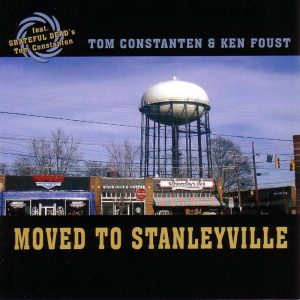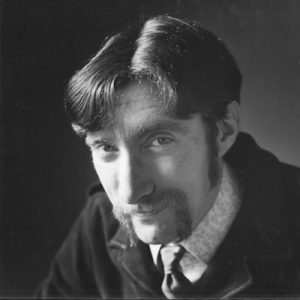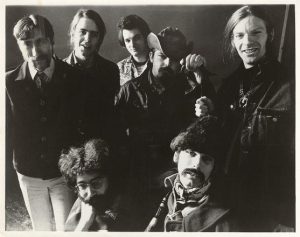HIT CHANNEL EXCLUSIVE INTERVIEW: May 2011. We had the great honour to talk with a truly legendary musician: keyboardist Tom Constanten. Tom is famous from his tenure with Grateful Dead during their best period of their career. He played at Woodstock Festival and you can hear him in probably the best live album ever, Grateful Dead’s “Live/Dead”. He has a long solo discography with experimental works and frequent collaborations with Jefferson Airplane/Starship members. His latest works are the rock “Moved to Stanleyville” album with Ken Foust and the classical one “Deep Expressions, Longtime Known”. Below you’ll observe that he’s not only a great musician but also a very intellectual person. Personally, I learned a lot from his words:
 Your latest rock album is “Moved To Stanleyville” with Ken Foust. Did you enjoy making it? Are you happy by the feedback you get from fans and press for this?
Your latest rock album is “Moved To Stanleyville” with Ken Foust. Did you enjoy making it? Are you happy by the feedback you get from fans and press for this?
Sometime in the late sixties the idea arose of a “Concept Album.” The idea is that it would be designed, sequenced, and controlled, with details precisely fixed throughout. Examples abounded, like the Beatles’ “Sergeant Pepper” and (ed:Harry) Nilsson’s “The Point”. A legitimate precursor would be the recording of symphonic pieces on long playing records. In the days of the 78 rpm Berliner disc, an “album” was really an album, with upwards of a half dozen discs in their individual sleeves bound into the fascicle. Beethoven’s “Ninth Symphony”. Now, there’s a concept album! Of course Beethoven never knew about lps. Still, going back to the 19th century, composers wrote the occasional “Albumblatt”, a page from the album, so to say. Recent releases of Beatles material, however, reveal the fact that it’s all packaging. They’d been ruminating on the material that appeared on the “White Album”, “Abbey Road”, et al. for a good long time. And the way it came out was, well, just the way it came out. So this, like most albums, “Moved to Stanleyville” consisted mainly of the material we had ready that we felt to be the most strongly presentable. It’s like assembling a jigsaw puzzle, except you have to create the pieces, too! As far as the fans’ response, well, I’m still astounded by how kind they can be.
Also in 2006, it was released “Deep Expressions, Longtime Known” where you played classical compositions. Is classical music your “home”? Do you feel more comfortable playing classical music that being in a rock’n’roll band?
Those takes were all stepchildren, like me. They were done in studios when I was recording other projects, and took advantage of extra time to lay a few tracks of whatever happened to be in my hands at the time. For example, the harpsichord takes were from a 1972 session in Los Angeles. I’d sketched out some charts for a film score, and after the business was done, there was a little extra time. I immediately ran through the “Italian Concerto” of Bach. Then I asked, could we roll tape.The reason there’s only the first half of the Scarlatti is that it’s when time ran out. I could easily fill a couple more CDs with recordings already completed, and yet more with music that’s still in my hands.
Do you have happy feelings when you remember your Grateful Dead days? Do you remember your appearance in Woodstock? Had you realized that this festival would be written in music history?
The sheer numbers of people at the “Woodstock” Festival amazed us all. More so than the show itself. Speaking more generally, there was a feeling in the Sixties, especially the middle of the decade, that these were special times. Chaotic, overwhelming, and magical.
 “Live/Dead” is one of the best live albums ever! What do you think about this album? Is this the best G.D concert that has been recorded?
“Live/Dead” is one of the best live albums ever! What do you think about this album? Is this the best G.D concert that has been recorded?
Nobody had it in mind: “let’s make an album” when we played this music. “Aoxomoxoa” was still making its way through studio post-production at the time, and the bean counters at the record company were getting antsy about the dollars they’d already spent. As far as we were concerned, though, it was familiar repertoire – songs we’d been doing for a while – and we had an obligation to Warner Brothers to come up with a product. So the idea of throwing in a double album of a live show got them turned around and excited in Hollywood. We were fortunate enough to have a run of shows booked. So we started to record every show. Sixteen track. The real deal. Somehow, there was something objectionable to every time we tried – until this time. Right away, everyone’s eyes brightened. This is it! Let’s send it off! “Dick’s Picks 16” (ed: series of Grateful Dead’s live recordings) is another show from the same weekend, and I can’t for the life of me see what was so objectionable.
You were a student of greats like Berio, Stockhausen and Boulez. Was this period helpful for your later music career? Had you ever met Holger Czukay and Irmin Schmidt from Can band (they were Stockhausen students too)?
There were many Stockhausen students. I remember especially Michael von Biel and Johannes Fritsch at Darmstadt. You got phone numbers of those other guys? I’d like to meet them. (ed: I couldn’t ever imagine this!!!) I am convinced Stockhausen has left a legacy of great dimension.Still, I am sad for his last years. In particular, he was on the radio in northern Germany on September 14, 2001, talking about things mainly philosophical and spiritual.You might remember that he was a devout Catholic.Anyhow, there was a Q & A session afterwards, and someone asked if these concepts had any application in the real world.He responded that we’d just witnessed Lucifer mount a large scale piece of performance art in New York City (ed:Stockhausen meant the 9/11 attacks in New York). A performance, he went on, that people sacrificed their lives to participate in.The response was volcanically negative. They emphasized his praise of the tragedy as performance art, crucially failing to mention the One he credited as its author – Lucifer, the Devil.Brilliant, megalomanic, yes, he was, but deservedly so.Still, he folded like a hand with no face cards.He should have sued the misquoters for defamation.
Do you think rock’n’roll is dead and everything now is about managers, deals and contracts? So, Jim Morrison was right?
John Cage (ed:legendary American composer,poet and philosopher. Completely unknown in Greece) was once asked, “Isn’t it marvelous there’s so much fine music around?” The miracle, he replied, was that music could exist at all. To be sure, what goes on onstage seems to be far removed from the offstage machinations that make it possible! Often things go right, but for the wrong reason.This is nothing new, though.
What music do you hear this period?
Over the past years, the amount of recreational listening I’ve done has decreased markedly.I even need a reason or purpose to schedule a piece in my practice docket!
 With who musician you’d like to play with and hasn’t happened yet? Maybe with Tom Waits?
With who musician you’d like to play with and hasn’t happened yet? Maybe with Tom Waits?
I don’t think that way. I just take things as they come. None of my most satisfying achievements could have been stated a priori as a goal.Still, it has been my delight to share the stage with some wonderful players.Of late, Country Joe McDonald, David LaFlamme (ed:American violinist,founder of It’s A Beautiful Day), David Freiberg (ed:Jefferson Starship vocalist), Slick Aguilar (ed:Jefferson Starship guitarist).These are not just wonderful players to me. They are family, an extended support group.
Have you ever been in Greece? Send a message to your Greek fans.
My heart breaks to tell you that I have never been to Greece. Still, the connexions are so close.My stepfather, Frank Costis Constanten, was a Greek national. He was from the island of Karpathos, in the Dodecanese. He was a decorated war hero, at the invasion of Normandy in June, 1944 with the Fourth Infantry Division, U. S. Army. I saw the article in the New York newspaper, touting him as the “Combat Hero of the Savoy Plaza.” He was working at the Copacabana in New York, when he was invited by the then new Sands Hotel in Las Vegas, whence we relocated in 1954.
A huge THANK YOU to Mr Tom Constanten for his great answers!
Check out http://www.tomconstanten.com

